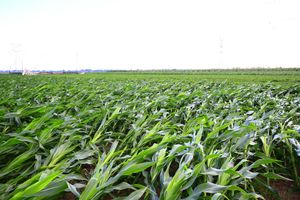Corn, Soybean Indemnity Payments to Vary Widely for 2022
 Crop insurance indemnity payments will vary for farmers this year, dependent mainly on location and local weather. Those in states impacted by drought conditions or severe storms this growing season, the Midwest as an example, may find their yields below actual production history (APH) levels. Insured farmers in these areas may be eligible for an indemnity payment due to reduced yields, depending on the coverage level elected.
Crop insurance indemnity payments will vary for farmers this year, dependent mainly on location and local weather. Those in states impacted by drought conditions or severe storms this growing season, the Midwest as an example, may find their yields below actual production history (APH) levels. Insured farmers in these areas may be eligible for an indemnity payment due to reduced yields, depending on the coverage level elected.
With the current trend of CBOT commodity prices, producers in the upper Midwest with near or slightly below-APH yields will likely not receive any 2022 crop insurance indemnity payment. This could be different for soybeans if the current harvest price as of October 7 continues through the month. Corn and soybean producers in Nebraska, South Dakota, western Iowa, portions of Minnesota and other states affected by severe drought and severe storms could realize indemnity payments due to low yields.
The Federal crop insurance harvest prices for corn and soybeans are based on the average CBOT price for December corn futures and November soybean futures during October. The USDA Risk Management Agency will announce the harvest prices sometime shortly after November 1. The 2022 crop insurance calculations for Revenue Protection (RP) insurance policies with or without harvest price protection may function differently for corn and soybeans based on current projected harvest prices.
Due to the considerable variation in potential indemnity payments across the U.S. Corn Belt, producers who experienced crop yield losses or near APH yields with the potential for crop insurance payments should contact their crop insurance agent or regional ProAg representative to help navigate any questions. Properly documenting yield losses will help your agent determine whether a notice of loss should be filed with your approved insurance provider once final harvest prices are released accounting for your coverage level, policy and any additional private products added to your coverage.
Read more on crop insurance payment variability and calculations here.
